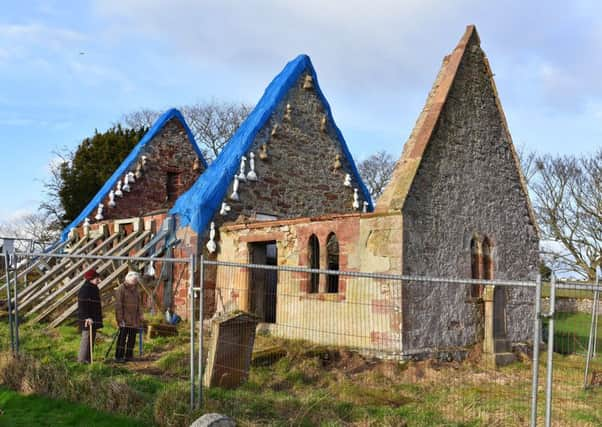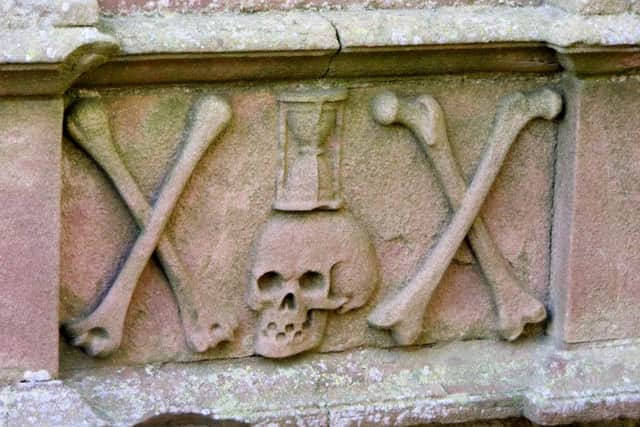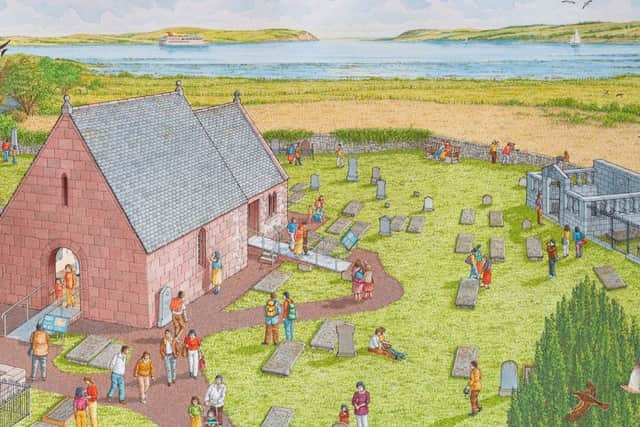Historic medieval Highland church to be restored


The repair and reuse of historic Kirkmichael ruin, which dates back to the 15th century, is now well underway after 15 years of seeking funding.
A contract brief has been issued in a bid to bring back to life the ancient building, which tell a tremendous story.
Advertisement
Hide AdAdvertisement
Hide AdInitially it was a medieval church, serving the original parish of Kirkmichael.


Following the Reformation, the building was adapted for use as a protestant kirk. The parishes of Kirkmichael and Cullicudden, mostly in the possession of the family of Urquhart, were amalgamated by Act of Parliament in 1662, with a requirement to build a new “centrical” church at the farmstead of Resolis.
However, the estate owners kept the two old kirks of Kirkmichael and Cullicudden going until they were too ruinous to repair, and Kirkmichael therefore continued in use as a kirk until 1769.
The chancel was already the mausoleum of the Urquharts of Braelangwell - and in more modern times, the Shaw-Mackenzies of Newhall. George Gun Munro of Poyntzfield, around 1800, rebuilt part of the nave as a splendid mausoleum for his clan.
The kirk-yard itself is also remarkable.


Some of the choicest tales of the Cromarty writer, and also stonemason, Hugh Miller, involve Kirkmichael.
He laboured on a stone lying just west of the bell tower gable.
Meanwhile, Jane Duncan, best-selling novelist of the 1960s, and still very popular today, is buried near the south wall.
Advertisement
Hide AdAdvertisement
Hide AdThere are two very unusual separate mausolea, to Lady Ardoch and Florence Dunbar, to the south and north of the kirk.


There is a superb example of a medieval complex cross lying beside the yew tree. And many of the slabs contain dense assemblages of artistically-worked symbols of mortality and immortality.
It is located on the Black Isle between Balblair and Jemimaville.
There aren’t many major new heritage projects being launched in the current financial climate, but members of the tiny Kirkmichael Trust have simply refused to take no for an answer for the past 15 years, and funding of £475,000 is finally in place.
Within the buildings are an unique array of sculpted mediaeval tombstones. Once the church is restored, they will be put on display, with the story of local families and places connected with the ancient cemeteries of Cullicudden and Kirkmichael imaginatively told within.


Kirkmichael finally fell into disuse in the 18th Century.
The last surviving part of the roof collapsed under the weight of heavy snow in April last year.
Once restored, the trust has proposed creating a permanent display of medieval sculptured gravestones inside the building.
Advertisement
Hide AdAdvertisement
Hide AdThe brief for the project contractor – the builder who will recruit all the separate crafts required within an historic build of this kind – has now been issued.
Project architect Chris Bowes, of McGregor Bowes in Edinburgh, believes that this unusual and prestigious repair and construction project will be of great interest to all contractors with experience in bringing old buildings back to life.
He said: “We’re right down to the roots of the building – the frame – so a lot of it is new construction using salvaged material from the site, or where that isn’t possible, traditional locally-sourced materials.”
The project will include sensitive archaeology to complement the repair works, and the team will be ensuring that the project will involve the opportunity to develop skills in conservation and traditional building techniques.
The project will also offer opportunities for involvement to the public and local schools. Tore Primary School has got in first, with an architecture-based visit already planned for March! There will also be practical craft workshops available covering some of the stoneworking (including using quicklime), woodworking and metalworking skills which will be part of this exciting project.
Major partners include the Heritage Lottery Fund, Historic Environment Scotland, the Highland Council and the Robertson Trust, but the project could not have succeeded without contributions from many other local and world-wide benefactors.
Work is due to start in the spring.